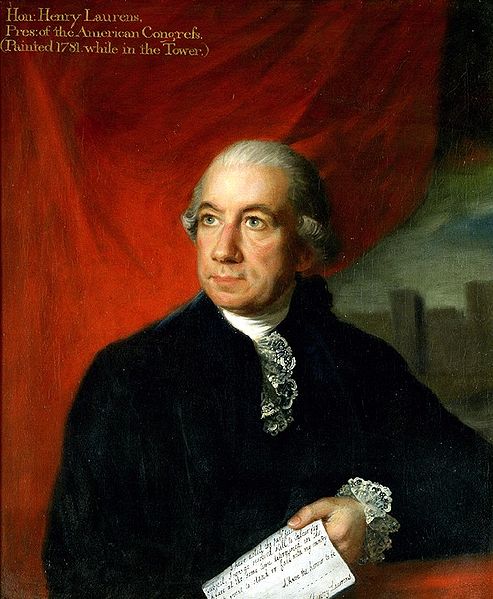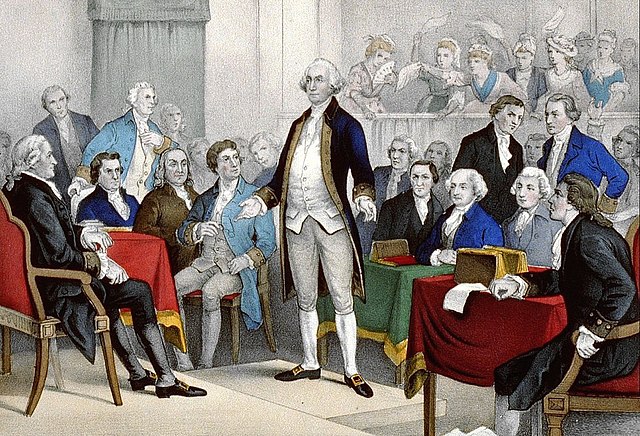Henry Laurens was an American Founding Father, merchant, slave trader, and rice planter from South Carolina who became a political leader during the Revolutionary War. A delegate to the Second Continental Congress, Laurens succeeded John Hancock as its president. He was a signatory to the Articles of Confederation and, as president, presided over its passage.
Laurens depicted by Lemuel Francis Abbott, 1781 or 1784
Portrait of Laurens by John Singleton Copley (U.S. National Portrait Gallery NPG.65.45)
1784 engraving of Laurens as President of the Continental Congress
Treaty of Paris, by Benjamin West, 1783 (left to right: John Jay, John Adams, Benjamin Franklin, Henry Laurens, and William Temple Franklin)
Second Continental Congress
The Second Continental Congress was the late-18th-century meeting of delegates from the Thirteen Colonies that united in support of the American Revolution and the Revolutionary War, which established American independence from the British Empire. The Congress constituted a new federation that it first named the United Colonies, and in 1776, renamed the United States of America. The Congress began convening in Philadelphia, on May 10, 1775, with representatives from 12 of the 13 colonies, after the Battles of Lexington and Concord.
Congress Voting Independence by Robert Edge Pine
Image: Independence Hall 10
A 5-dollar banknote issued by the Second Continental Congress in 1775
An 1876 Currier and Ives portrait of George Washington being appointed commanding general of the Continental Army








